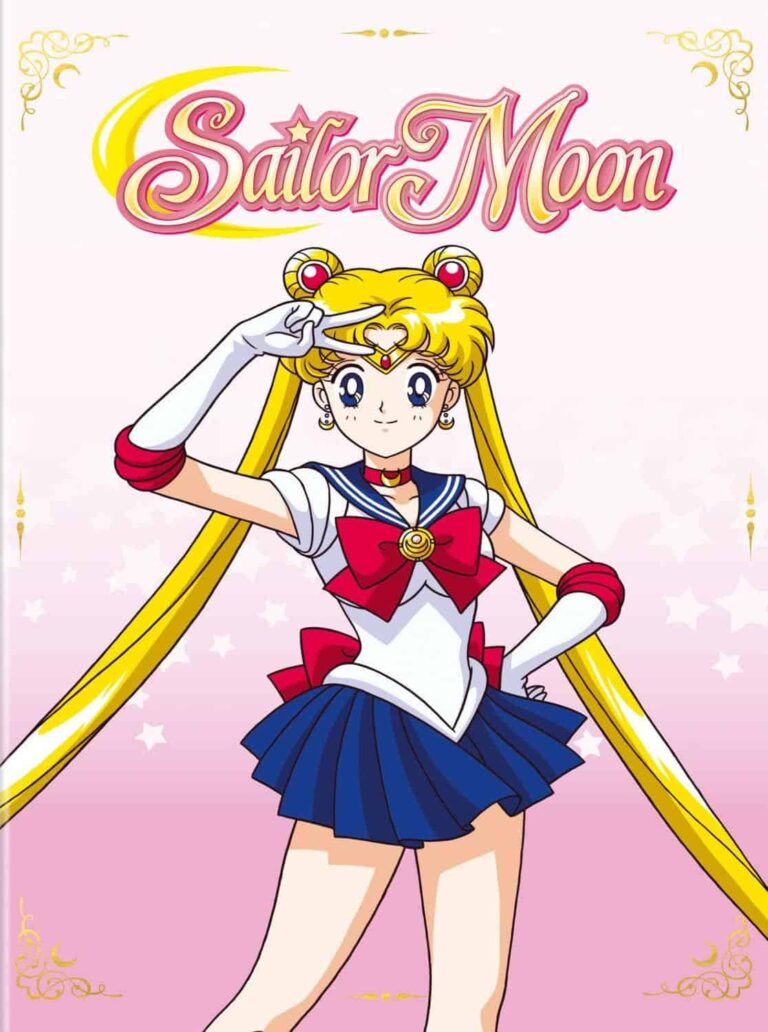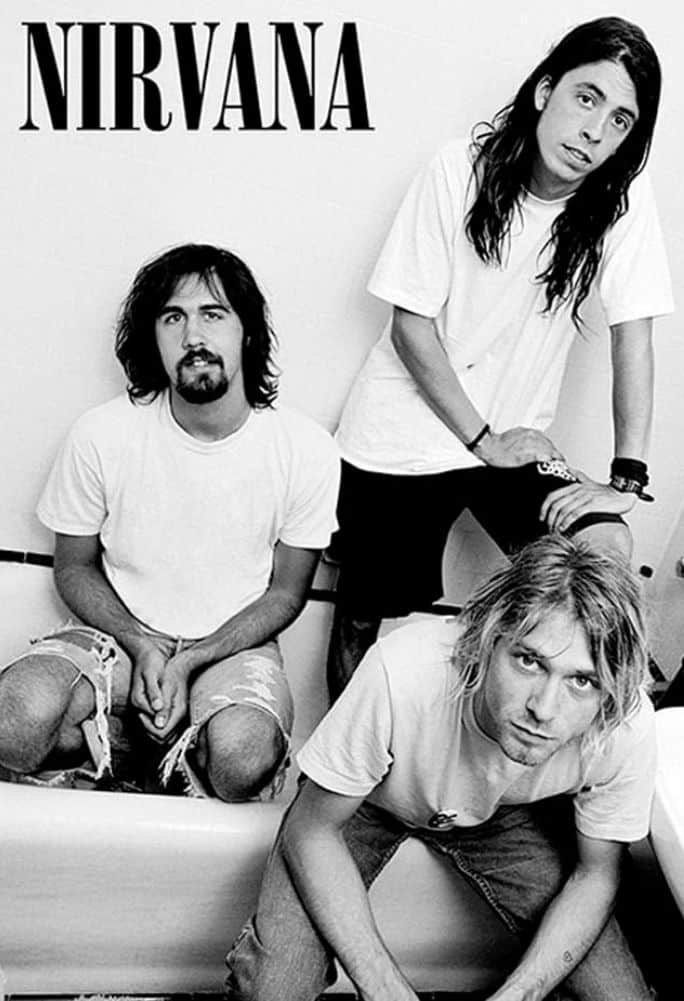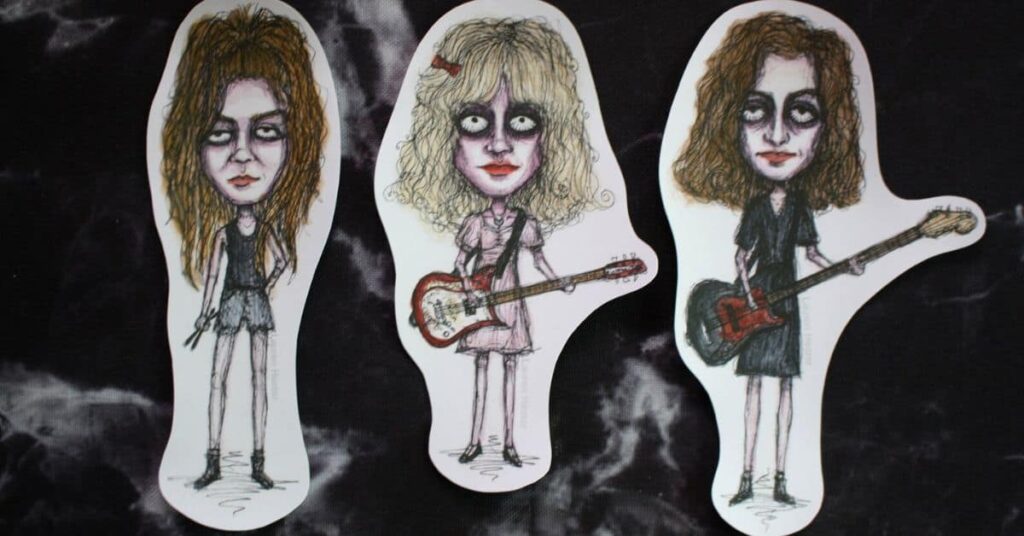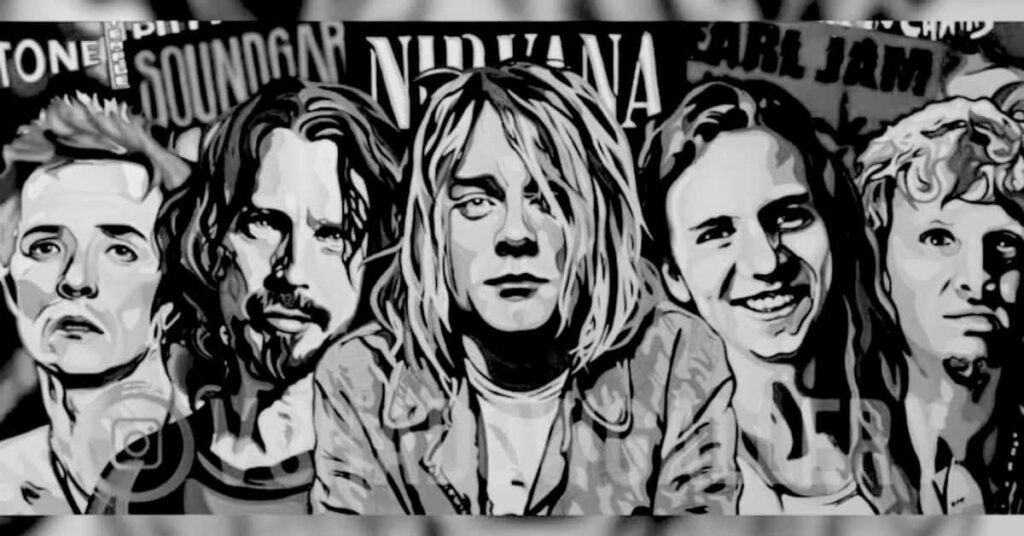The 90s was an iconic era, filled with grunge music, fashion, and a unique sense of rebellion that captivated an entire generation. From grunge posters and art to the pages of grunge magazines, the 90s grunge aesthetic still resonates with us today. This article dives deep into the world of 90s grunge media, exploring how it influenced not only music and fashion but also permeated into areas like anime, posters, art, photos, and stickers.
Table of Contents
The Birth of 90s Grunge Media
To understand the world of 90s Grunge Media, we need to go back to its roots. Grunge emerged in the Pacific Northwest, particularly Seattle, in the late 80s and early 90s. It was a response to the excesses of the 80s hair metal scene and the glossy pop music that dominated the airwaves.
Bands like Nirvana, Pearl Jam, Soundgarden, and Alice in Chains were at the forefront of this movement. They embraced a raw and unpolished sound, characterized by distorted guitars, introspective lyrics, and a sense of rebellion. Their music became the anthem for a generation disillusioned with the mainstream.
90s Grunge Anime Aesthetic
The 1990s marked an era of cultural and artistic transformation, and one of the most iconic trends to emerge from this period was the Grunge 90s Anime Aesthetic. This unique fusion of grunge fashion and the vibrant, expressive world of anime left an indelible mark on the pop culture landscape. In this article, we’ll take a trip down memory lane to explore the origins, characteristics, and enduring appeal of the Grunge 90s Anime Aesthetic.

Grunge and Anime: An Unlikely Fusion
The 90s brought forth two cultural phenomena that seemed worlds apart at first glance. On one hand, there was the Grunge movement, characterized by its gritty, rebellious ethos, flannel shirts, ripped jeans, and an overall “anti-fashion” attitude. On the other hand, the world of anime was experiencing a renaissance, with shows like “Neon Genesis Evangelion,” “Cowboy Bebop,” and “Sailor Moon” captivating audiences worldwide.
So, how did these seemingly disparate worlds collide? The answer lies in the unorthodox, rebellious spirit that both Grunge and anime embodied. Grunge was about embracing imperfections and rejecting the mainstream, while anime was known for its colorful, fantastical, and sometimes dark storytelling. This blend of rough-edged fashion with whimsical animation led to the birth of the Grunge 90s Anime Aesthetic.
Characteristics of the Grunge 90s Anime Aesthetic
- Grunge Fashion Elements: The Grunge 90s Anime Aesthetic borrowed heavily from the fashion trends of the time. This included oversized flannel shirts, ripped jeans, combat boots, and band T-shirts. These elements were combined with anime-inspired accessories like chokers and wristbands, creating a distinctive look that resonated with a generation.
- Rebellious Attitude: The Grunge 90s Anime Aesthetic was more than just clothing; it was a statement. It symbolized a rejection of conformity and a celebration of individuality. Much like the characters in the anime of that era, those who embraced this aesthetic sought to break free from societal norms.
- Pop Culture References: This aesthetic was not limited to fashion alone. It also found its way into the world of music, with bands like Nirvana and Pearl Jam becoming synonymous with the Grunge movement. In anime, shows like “Dragon Ball Z” and “Yu Yu Hakusho” showcased characters who embodied the Grunge spirit, with their non-conformist attitudes and rugged appearances.
- Nostalgia Factor: The Grunge 90s Anime Aesthetic is intrinsically tied to a sense of nostalgia for those who grew up during that era. It’s a reminder of the shows they watched, the music they listened to, and the fashion they embraced. This nostalgia continues to attract new generations who are captivated by the rebellious charm of the 90s.
90s Grunge Posters
Grunge posters, like the music itself, conveyed a sense of rebellion and authenticity. They often featured dark, moody, and sometimes gritty imagery that spoke to the disaffected youth of the era. The posters were a reflection of the grunge ethos – raw, unapologetic, and unconventional.

The Artists Behind the Posters
To truly appreciate 90s grunge posters, we must acknowledge the talented artists responsible for creating these iconic pieces. Many of them were influenced by the DIY (Do It Yourself) spirit of the grunge movement, and their work perfectly captured the essence of the era.
- Art Chantry: Art Chantry is often credited with defining the grunge poster aesthetic. His designs often incorporated bold typography and distressed visuals. Chantry’s work for bands like Nirvana and The Sonics remains highly sought after by collectors.
- Frank Kozik: Known for his psychedelic and darkly humorous designs, Frank Kozik’s posters for bands like Pearl Jam and Sonic Youth encapsulated the spirit of grunge. His use of bizarre and surreal imagery set his work apart.
- Lindsey Kuhn: Lindsey Kuhn’s work is characterized by intricate linework and dark themes. His posters for bands like the Melvins and Mudhoney were a staple in the grunge scene.
- Coop (Chris Cooper): Coop’s posters often featured sultry, punk-inspired pin-up girls combined with elements of dark humor. His work for bands like Soundgarden and Alice in Chains was quintessentially grunge.
- Ames Bros (Barry Ament and Coby Schultz): The Ames Bros are known for their distinctive, cartoonish style. Their work for bands like Pearl Jam and Mudhoney was a visual treat that perfectly matched the grunge spirit.
90s Grunge Art
Grunge art, much like the music and fashion associated with the movement, embodied a sense of rebellion and authenticity. It rejected the glossy, commercialized aesthetic of the 1980s in favor of something raw, unrefined, and emotionally charged. The art created during this period was characterized by its chaotic, gritty, and often dark themes, serving as a reflection of the disillusionment and disconnection felt by many young people at the time.

Key Characteristics of 90s Grunge Art
- Raw Aesthetic: One of the defining features of grunge art is its raw and unfiltered appearance. Artists of this movement intentionally embraced imperfections and rough edges in their work. The imperfections were seen as a rebellion against the overly polished and commercial art that dominated the 1980s.
- Dark and Moody Themes: 90s grunge art often delved into dark and moody themes, reflecting the sense of angst and disillusionment prevalent in the era. Themes such as alienation, despair, and the search for authenticity were commonly explored.
- Use of Mixed Media: Grunge artists frequently incorporate mixed media into their work. This included the use of collage, unconventional materials, and a mishmash of various artistic techniques. This approach allowed for a greater sense of spontaneity and unpredictability in the artwork.
- Rejection of Conventional Beauty: The art of the 90s grunge movement challenged conventional notions of beauty. It celebrated the unconventional, the gritty, and the overlooked. This ethos extended to the choice of subjects, often featuring marginalized or subversive characters.
Notable Artists of the 90s Grunge Art Movement
Several artists made a significant impact on the grunge art scene in the 90s. Let’s take a closer look at a few of them:
- Mike Kelley: Known for his provocative and unconventional art, Mike Kelley was a central figure in the grunge art movement. He was particularly skilled at blending different media and often explored themes of childhood, trauma, and repressed memories in his work.
- Raymond Pettibon: An influential artist in the punk and grunge scenes, Pettibon’s work featured a distinctive mix of dark and satirical imagery. He is perhaps best known for his album cover artwork for the band Black Flag.
- Barbara Kruger: Barbara Kruger’s bold and politically charged art was a vital part of the grunge art landscape. Her text-based works often overlaid with striking imagery, delivered potent messages on consumerism and gender issues.
- Dan Eldon: A young and promising artist, photojournalist, and activist, Dan Eldon’s work embraced the chaos and turmoil of the world. His journal-style art often incorporated photographs, text, and mixed media to capture the essence of the time.

90s Grunge Photos
Grunge photos from the 90s are more than just snapshots in time. They are a visual diary of a counterculture movement that questioned norms and challenged the status quo. These photos captured the authenticity and rawness of the grunge lifestyle. Whether it was candid shots of bands performing on stage or intimate moments behind the scenes, these photographs provided a window into the grunge world.
- Live Performances: One of the most captivating aspects of grunge culture was its live performances. Bands like Nirvana and Pearl Jam were known for their electrifying shows. 90s grunge photos often depict the intensity and passion of these performances. The dimly lit venues, flannel-clad musicians, and fervent fans all contributed to the unique atmosphere that is palpable in these images.
- Backstage Moments: Grunge culture was all about authenticity, and this authenticity extended to behind-the-scenes moments. Photographs of musicians tuning their guitars, sharing a laugh, or just hanging out backstage offer an unfiltered glimpse into the lives of these iconic artists.
- Street Fashion: Grunge fashion was as much a part of the culture as the music. 90s grunge photos captured people on the streets, showcasing their unique and often DIY fashion choices. These images reflect the rebellion against mainstream fashion trends, as well as the resourcefulness of grunge enthusiasts who put together their looks with thrifted clothing.
One of the intriguing aspects of the grunge culture was the DIY (Do It Yourself) mentality. This applied to everything from making music to personal expression through art and fashion. Grunge stickers became a way for fans to express their love for the music and the culture.
These stickers often featured band logos, song lyrics, and various grunge-inspired designs. The gritty, rebellious feel of the 90s grunge culture was perfectly encapsulated in these stickers. Fans would adorn their belongings, including skateboards, notebooks, and even their bedroom walls, with these stickers to showcase their affinity for grunge.
90s Grunge Magazine
90s grunge magazines were the connective tissue that linked the grunge subculture to a broader audience. They played an essential role in disseminating grunge’s message and style. Here are some of the key functions they served:
- Fashion Inspiration: Grunge magazines showcased the latest grunge fashion trends, making them accessible to readers worldwide. From distressed jeans to flannel shirts, these publications were the go-to sources for grunge style inspiration.
- Music Discovery: In an era before the internet, discovering new music was a challenge. Grunge magazines helped fans stay updated on the latest grunge bands and their releases. They featured interviews with musicians, album reviews, and concert coverage.
- Alternative Lifestyles: Grunge magazines encouraged a non-conformist and alternative way of life. They promoted DIY culture, self-expression, and a rejection of consumerism, resonating with those who felt disenfranchised by mainstream society.
- Cultural Commentary: These magazines didn’t just cover fashion and music; they also offered insightful commentary on the sociopolitical issues of the time. They discussed topics like environmentalism, anti-establishment sentiments, and the cultural implications of grunge.

Notable 90s Grunge Magazines
Several magazines were instrumental in bringing the grunge movement to the forefront. Let’s take a look at some of the most iconic ones:
- Sassy: While not exclusively a grunge magazine, Sassy had a significant influence on the alternative and grunge scene. It appealed to young women and addressed issues that mainstream magazines often ignored. Sassy embraced the rebellious spirit of the 90s and gave a voice to an alternative generation.
- Ray Gun: Ray Gun was known for its cutting-edge design and its focus on alternative music, including grunge. It was visually striking and appealed to the edgier side of grunge enthusiasts.
- Sub Pop Fanzine: This fanzine was closely associated with the record label Sub Pop, which played a pivotal role in promoting grunge music. Sub Pop Fanzine offered an intimate look into the grunge scene, featuring interviews with bands like Nirvana.
- Alternative Press: As the name suggests, Alternative Press was dedicated to the alternative music scene, including grunge. It provided in-depth coverage of grunge bands and their cultural impact.
Grunge Stickers
Grunge stickers emerged as an artistic expression during the heyday of the grunge subculture in the early 90s. This subculture was characterized by a love for all things alternative, including grunge music, fashion, and art. Grunge stickers quickly became a means of self-expression and a way for individuals to make a statement, often with a touch of irony or rebellion.
These stickers featured dark and edgy themes, such as distorted typography, rough textures, and provocative imagery. Bands like Nirvana and Pearl Jam, pioneers of the grunge movement, often used grunge-style artwork for their album covers and merchandise, further popularizing the aesthetic.
However, grunge stickers didn’t just exist within the music scene. They found their way onto skateboards, notebooks, lockers, and street signs, making them an iconic part of 90s youth culture. The act of slapping a grunge sticker on your belongings was a form of defiance, a way to say, “I’m different, and I don’t conform to the mainstream.”

The Resurgence of Grunge Stickers
Fast forward to the present day, and grunge stickers are experiencing a revival. Nostalgia for the 90s, in all its non-conformist glory, has brought grunge culture back into the limelight. Whether you were a part of the original grunge movement or are just discovering it now, grunge stickers have a unique appeal that transcends generations.
This resurgence can be attributed to several factors:
Nostalgia: Those who grew up in the 90s are now adults, yearning for the music, fashion, and art that defined their youth. Grunge stickers provide a tangible connection to that era.
Rebellion and Individuality: In a world that sometimes feels overly sanitized and conformist, grunge stickers offer a way to stand out and express your individuality. They’re a rebellion against the mundanity of modern life.
DIY Culture: The 90s were a DIY era, and grunge stickers are a perfect embodiment of that spirit. Making your own grunge stickers has never been easier, thanks to digital tools and easy access to printing services.
Creating Your Own Grunge Stickers
The great thing about grunge stickers is that you can make your own, customizing them to fit your personal style and interests. Here’s a step-by-step guide to creating your very own grunge stickers:
Gather Your Materials:
- A computer with design software (e.g., Adobe Photoshop, Illustrator, or a free alternative like GIMP)
- High-quality images, graphics, or text you want to use for your sticker
- Sticker paper or adhesive labels
- A printer
Design Your Sticker:
- Open your design software and create a new document with the dimensions you want for your sticker.
- Add your chosen images, graphics, and text.
- Experiment with grunge-style fonts, distressed textures, and dark color palettes to achieve that authentic 90s look.
Editing and Effects:
- Apply filters, textures, and effects to give your sticker that raw, grunge feel.
- Think about using distressed overlays, noise filters, and grain textures.
Printing:
- Once you’re satisfied with your design, print it on your sticker paper or adhesive labels.
- Ensure you follow the printing guidelines for your specific paper type.
Cut and Apply:
- Carefully cut out your stickers, ensuring you trim them neatly.
- Peel off the backing and apply them to your chosen surfaces.
- Sticker placement is a crucial part of the process, so be creative and bold!

Where to Find the Best Grunge Stickers
If the DIY route isn’t your cup of tea, you can easily find a wide array of grunge stickers online. Here are some recommended places to explore:
Etsy: Etsy is a treasure trove for unique and handcrafted items, including grunge stickers. You can find stickers designed by independent artists that capture the spirit of the 90s.
Redbubble: Redbubble offers a massive collection of stickers created by artists from around the world. You can search for grunge-style stickers, or explore artists who specialize in the aesthetic.
Local Art Fairs and Markets: Check out local art fairs and markets in your area. You might stumble upon talented artists selling their own grunge stickers.
Instagram: Many artists and small businesses use Instagram to showcase and sell their sticker designs. Browse through relevant hashtags like #grungestickers or #90sstickerart to discover new artists and their creations.
Conclusion
The 90s Grunge Media was a powerful force that left an indelible mark on music, fashion, and pop culture. Its enduring influence is a testament to the raw and rebellious spirit that defined the era. Nostalgia for the 90s, coupled with the timeless music and fashion, ensures that grunge remains a source of fascination for people of all ages.
The 90s grunge aesthetic was more than just a fashion trend or a music genre; it was a cultural revolution that left an indelible mark on media, art, and society as a whole. The raw, unpolished, and rebellious spirit of grunge influenced everything from music and fashion to posters, art, photos, and stickers. Its legacy continues to resonate with those who lived through the era and new generations who appreciate its authenticity. In a world of ever-changing trends, the 90s grunge aesthetic remains a timeless and influential part of our cultural history.
Frequently Asked Questions
What was the grunge movement in the 1990s?
In the late 80s and early 90s, there were some cool bands that played grunge music. These bands were Soundgarden, Nirvana, Alice in Chains, Pearl Jam, and Stone Temple Pilots.
Who was the most popular grunge group of the 90’s?
The rock band Nirvana from America (shown in a picture from 1992) is the most popular band in their style of music. They’ve sold more than 27 million albums in just the United States! The beginning of the grunge music movement was all about a record company called Sub Pop in Seattle and the music that was hidden away in that area.
Was grunge big in the 90s?
With Mudhoney, Nirvana, and Soundgarden at the helm, grunge music exploded in the early 90s – and the world didn’t know what hit it.
Who started 90s grunge?
Jack Endino, who is often called the “Godfather of Grunge,” recorded bands like Soundgarden, Mudhoney, Green River, Nirvana, and Blood Circus from 1984 to 1989. However, by 1990, the term “grunge,” which meant really loud and heavy music, had reached its highest point.
What is 90s grunge aesthetic?
Grunge fashion is all about a relaxed, mixed-up look with lots of layers and dark colors. You can learn about the history of grunge fashion, which influenced the 90s style.




